Rank
Let A € Mmxn(R) , it is called minor of order p to the determinant of each submatrix pxp of A.
Then, the rank of A is the largest order of any non-zero minor in A.
Likewise, it is said that a row or column is linearly dependent if it is a linear combination of the others. Otherwise, it is called linearly independent. Then, the rank of a matrix is the size of the largest collection of linearly independent columns (or rows) of A.
Example 1:

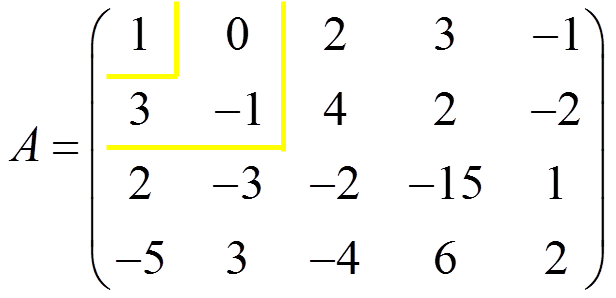
We look for non-zero determinant of order 1:
|1|≠ 0
Then a non-zero determinant of order 2, with the determinant of order one inside:
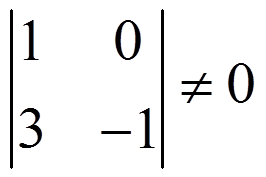
We edge the determinant of order 2 with the third row:

As all of them are zero, we remove the third row, because is linearly dependent:

We do the same with the fourth row

As all of them are zero, we remove the fourth row → rank(B) = 2
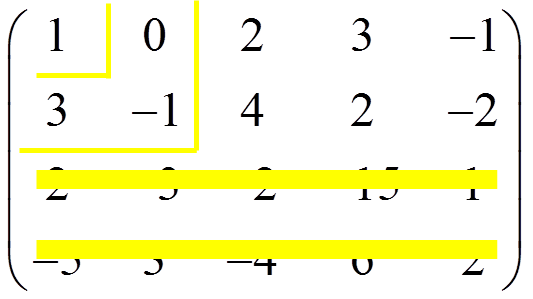
NOTE: in the beginning, we must remove the rows or columns of zeros, equal or proportional
Example 2:
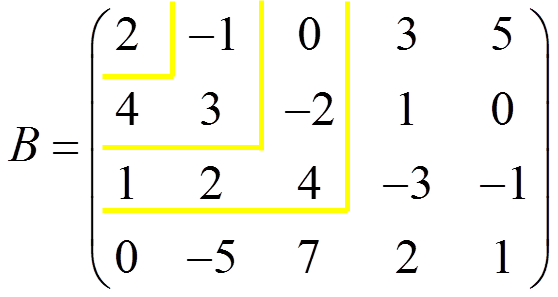
We have a non-zero determinant of orders 1 and 2, and we edge this last one:

Then we edge this determinant with the fourth row:
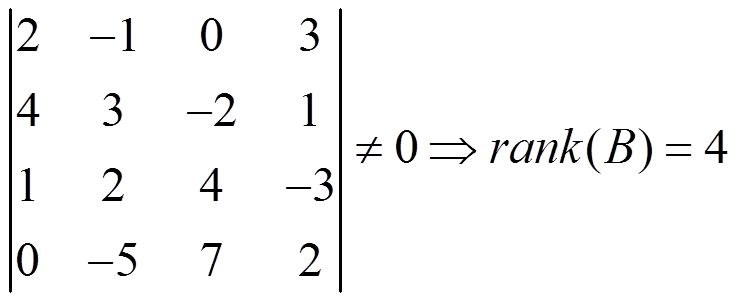
Exercises:
1.- Calculate the rank of the matrix:
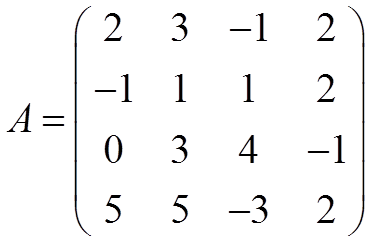
2.- Calculate the rank of the following matrices depending on the value of a:

Solutions: 1) rank(A) = 3
2) rk(B) = 1 if a = 2; rk(B) = 2 if a ≠ 2
rk(C) = 2 a € R
rk(D) = 2 if a = 1; rk(D) = 3 if a ≠ 1
Licensed under the Creative Commons Attribution Non-commercial Share Alike 3.0 License